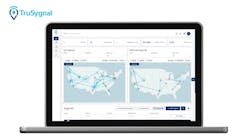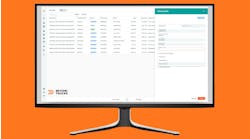According to data tracked by DAT Solutions, average truckload dry van and refrigerated spots ended 2017 at their highest point of the year as capacity tightened during the week ending Dec. 30.
The number of available loads fell 22% while the number of available trucks decreased 36%, in line with expectations for a holiday-shortened business week, the firm said, with winter weather also likely playing a role – keeping volumes down but also pushing rates higher in the Northeast and Midwest, since it was more difficult for trucks to operate in those regions.
DAT’s Mark Montague noted recently that the ELD mandate is having an impact.
“With Christmas landing on a Monday, the vast majority of drivers would have wanted to get home by Friday, no matter what kind of logs they use,” he explained. “But ELDs may have convinced a lot more of them to take all or part of the week off between the December 18 mandate day and the big holiday weekend.”
Montague also noted that some drivers – especially owner-operators –are so opposed to ELDs that they plan to retire or find a different line of work in the New Year.
“Driver turnover is already at 85% among small fleets, and it's even higher at the big carriers, so it wouldn't take much to cause a serious driver shortage,” he said. “Suffice it to say that electronic logs aren't going away, and it will take time for those small fleets to adjust their operations to fit the new reality.”
In terms of the impact on overall capacity, DAT reported that load-to-truck ratios have increased sharply for all three equipment types it tracks:
- Dry van load-to-truck ratio: 12.3, up 22%, setting an all-time high for the dry van segment.
- Flatbed load-to-truck ratio: 52.3, up 26%.
- Refrigerated or “reefer” load-to-truck ratio: 23.7, up 33%.
In the dry van market, load posts were down 22% and truck posts fell 36%. The national average van rate increased 2 cents to $2.11 per mile, the highest national average in three and a half years, DAT said.
Rates jumped significantly in major markets, including Los Angeles ($2.92 per mile, up 14 cents), Charlotte ($2.48 per mile, up 10 cents), Atlanta ($2.45 per mile, up 7 cents), Dallas ($2.12 per mile, up 18 cents), Buffalo ($2.82 per mile, up 15 cents), Philadelphia ($2.32 per mile, up 20 cents), Chicago ($2.95 per mile, up 15 cents), and Columbus, Ohio ($2.78 per mile, up 15 cents).
The national average spot reefer rate increased six cents to $2.46 per mile, its highest point since July 2014. Reefer load posts declined only 9% while the number of trucks posted plunged 32%.
Tighter capacity helped push up rates in key reefer markets including Grand Rapids, Mich. ($3.74 per mile, up 29 cents), Chicago ($3.29 per mile, up 26 cents), Philadelphia ($3.03 per mile, up 21 cents), Los Angeles ($3.22 per mile, up 28 cents), Atlanta ($2.75 per mile, up 12 cents), Lakeland, Fla. ($1.58 per mile, up 19 cents), McAllen, Texas ($2.37 per mile, up 26 cents), and Dallas ($2.39 per mile, up 27 cents).
Flatbed load posts were down 32% and truck posts dropped off 46% last week, DAT said. However, the national average flatbed rate held steady at $2.33 per mile compared to the previous week – just one cent lower than the peak rate in October, the firm noted.



